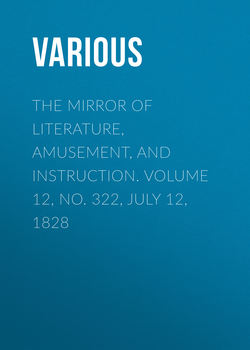Читать книгу The Mirror of Literature, Amusement, and Instruction. Volume 12, No. 322, July 12, 1828 - Various - Страница 2
CLARENCE TERRACE, REGENT'S PARK
ORIGIN OF PARISHES
Оглавление(For the Mirror.)
How ancient the division of parishes is, may at present be difficult to ascertain. Mr. Camden says, England was divided into parishes by Archbishop Honorius, about the year 630. Sir Henry Hobart lays it down, that parishes were first erected by the council of Lateran, which was held A.D. 1179. Each widely differs from the other, and both of them perhaps from the truth, which will probably be found in the medium, between the two extremes. We find the distinction of parishes, nay, even of mother churches, so early as in the laws of King Edgar, about the year 970. The civil division of England into counties, of counties into hundreds, of hundreds into tithings, or towns, as it now stands, seems to owe its original to King Alfred; who, to prevent the rapines and disorders which formerly prevailed in the realm, instituted tithings; so called, from the Saxon, because ten freeholders with their families composed one. These all dwelt together, and were sureties, or free-pledges to the king for the good behaviour of each other; and if any offence were committed in their district, they were bound to have the offender forthcoming. And therefore, anciently, no man was suffered to abide in England above forty days, unless he were enrolled in some tithing or decennary. As ten families of freeholders made up a tithing, so ten tithings composed a superior division, called a hundred. In some of the more northern counties these hundreds are called wapentakes. The sub-division of hundreds into tithings seems to be most peculiarly the invention of Alfred; the institution of hundreds themselves he rather introduced than invented, for they seem to have obtained in Denmark; and we find that in France a regulation of this sort was made above 200 years before; set on foot by Clotharicus and Childebert, with a view of obliging each district to answer for the robberies committed in its own division. In some counties there is an intermediate division between the shire and the hundred, as lathes in Kent, and rapes in Sussex, each of them containing about three or four hundreds a-piece. Where a county is divided into three of these intermediate jurisdictions, they are called trithings, which still subsist in the large county of York, where, by an easy corruption, they are denominated ridings; the north, the east, and the west.
J.M. C–D.
